Seoraksan National Park (Inner Section) (설악산국립공원 (내설악))
15.8 Km 196761 2021-04-13
Buk-myeon, Inje-gun, Gangwon-do
+82-33-801-0900
Daecheongbong Peak in Seoraksan Mountain, at an altitude of 1,708 meters, is the highest peak among the Taebaek Mountain Range, providing amazing view all year round. With various flowers in spring, clear and fresh stream water in summer, fall foliage in fall, and snow covered mountain in winter, Seoraksan Mountain is the most beautiful mountain in Korea.
The inner section ("Naeseorak") of the mountain stretches from the borderline of Hangyeryeong Pass and Misiryeong Pass to Inje-gun in the west. There are various valleys and waterfalls not to be missed as well as several hiking courses that represent the mountain.
Yongdae National Recreational Forest (국립 용대자연휴양림)
16.7 Km 15827 2020-03-27
7, Yeonhwadong-gil, Inje-gun, Gangwon-do
+82-33-462-5031
Yongdae National Recreational Forest features rivers that flow from Maebongsan Mountain (alt. 1,271 m) and Cheoljeongbong Mountain (alt. 1,172 m). The forest consists of deciduous trees such as oak, linden, and birch, as well as pine trees. Not only does the forest boast a beautiful landscape all-year-round, but also serves as a habitat for wild animals of various species, including rabbits, deer, squirrels, raccoons, and even lenoks, which are designated as endangered species.
Yanggu Porcelain Museum (양구백자박물관)
16.8 Km 19976 2022-08-09
5182, Pyeonghwa-ro, Yanggu-gun, Gangwon-do
+82-33-480-7237
Yanggu Porcelain Museum (formerly Bangsan Porcelain Museum) exhibits white porcelain from the Bangsan area, along with its collection and tools. There are also various visual aids that help understand the history of porcelain in the Bangsan area. The experience room is equipped with electric kilns, gas kilns, and firewood kilns, and is a facility for both outdoor and indoor experiences. Here, visitors can experience the entire process of making clay, molding, and baking it in a kiln. Bangsan-myeon, Yanggu was already well-known for pottery production since the Goryeo dynasty. During the Joseon dynasty, raw materials were supplied to the Gwangju branch in Gyeonggi-do, and here the technology and aesthetics spread to Gwangju.
Sibiseonnyeotang (Tangsudonggyegok Valley) (십이선녀탕(탕수동계곡))
17.1 Km 9456 2021-02-24
Sibiseonnyeotang-gil, Inje-gun, Gangwon-do
+82-33-462-2554
Sibiseonnyeotang Valley (Valley of the Twelve Angels’ Bath) is a beautiful valley filled with water flowing through a cascade of waterfalls and pools. In the past, there were 12 of each, although the size and shape has changed over time. The valley also features many uniquely shaped rocks and a forest comprised of many types of trees, including maple, pine nut, and pine trees. The path passing through the V-shaped valley crosses the stream often, so visiting after heavy rainfall is not recommended.
Seoraksan National Park (Southern Section) (설악산국립공원 (남설악))
17.3 Km 44281 2024-04-02
801 Seorak-ro, Yangyang-gun, Gangwon-do
Seoraksan Mountain, the highest amid the Taebaek Mountain Range, boasts beautiful landscape and scenery all year round. To the east of Hangyeryeong and Misiryeong Passes is classified as the outer section ("Oeseorak"), to the west is the inner section ("Naeseorak"); and to the south of Hangyeryeong Pass as the southern section ("Namseorak").
The southern section is famous for its mineral water, hot springs, and waterfalls including Yongsopokpo, Sibipokpo, and Yeosinpokpo Falls. Jeongbongsan Mountain (1,424.2 meters) is also included in the area. There are also several different hiking courses varying in distance and duration.
Manhae Village (만해마을)
18.1 Km 28971 2021-07-29
91, Manhae-ro, Inje-gun, Gangwon-do
+82-33-462-2303
Manhae Village was established as a training center and memorial hall for national activist Monk Manhae Han Yongun, revered for his literary and philosophical inspiration, as well as his devotion to the nation and Korean people during the Democracy Movement.
Yanggu Prehistory Museum (양구선사박물관)
19.2 Km 26046 2022-08-18
439-52, Geumgangsan-ro, Yanggu-gun, Gangwon-do
+82-33-480-7220
Yanggu Prehistory Museum displays artifacts from the Paleolithic Age found in Sangmuryong-ri, Yanggu-eup and the Neolith Age discovered in Hyeon-ri, Haean-myeon. It is the first prehistory museum in the nation and aims to teach visitors about Korean prehistoric culture in a manner easy to understand.
Paroho Lake (Yanggu) (파로호(양구))
19.2 Km 20844 2021-11-30
545, Ha-ri, Yanggu-gun, Gangwon-do
+82-33-480-2531
Paroho Lake is a manmade lake that was completed in 1943. The lake was created due to the construction of a hydraulic power plant in Hwacheon during Japanese colonial period. The name was given after President Syngman Rhee designated a plaque in his own handwriting naming the body of water ‘Paroho Lake’ during the Korean War after a victorious feat in a battle against the Chinese army. The power plant has a generation capacity of 105,000 kilowatts, and the lake is one of the top fishing grounds in Korea as it is abundant in freshwater fish.
The area boasts several splendid views and a former president built his country home on the lake. Relics from the Stone Age and New Stone Age were found to be well preserved in the area. Twenty-one dolmens were found on the lake grounds, as well as 4,000 pieces of Prehistoric relics used during Paleolithic age, drawing interest from the academic field. Recently, habitats of mandarin ducks, a national natural monument, were found near the Paroho lakeside.
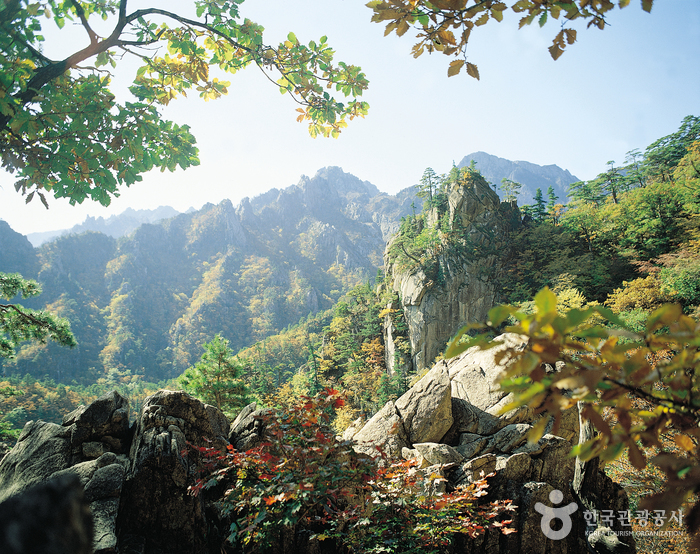
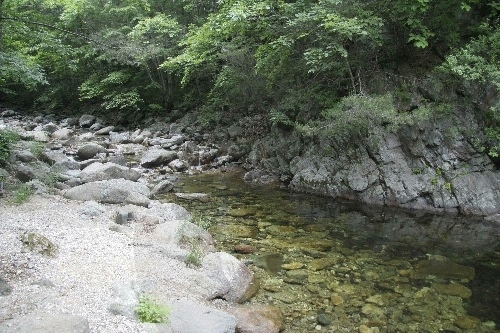
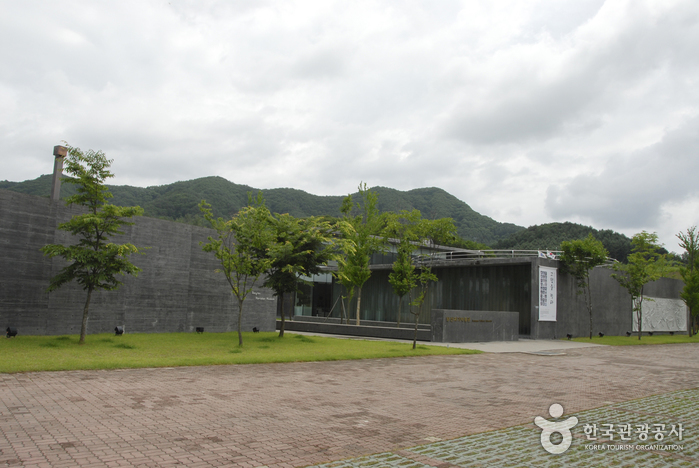
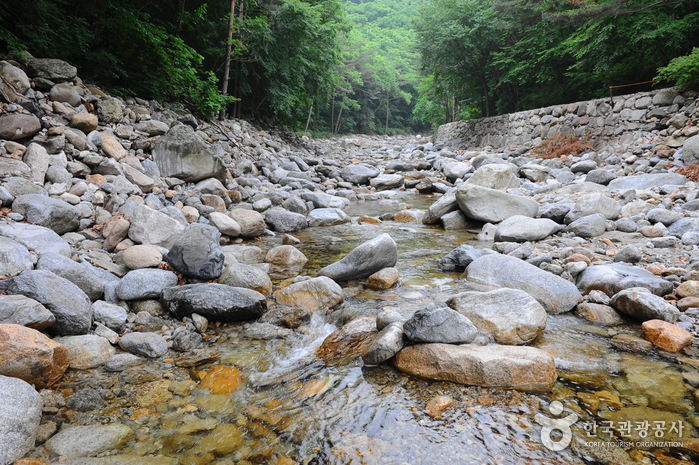
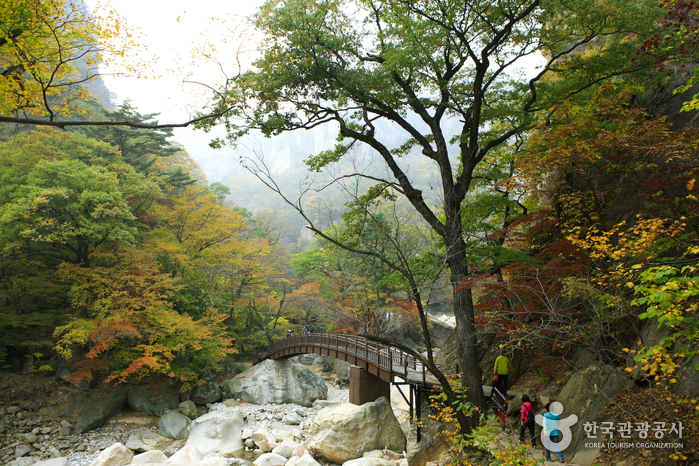
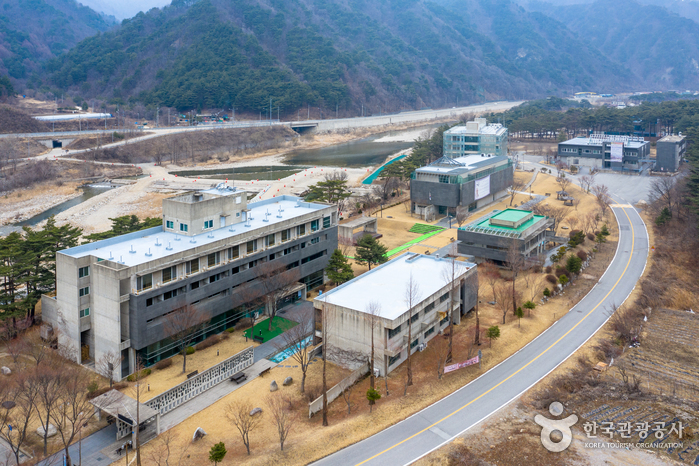
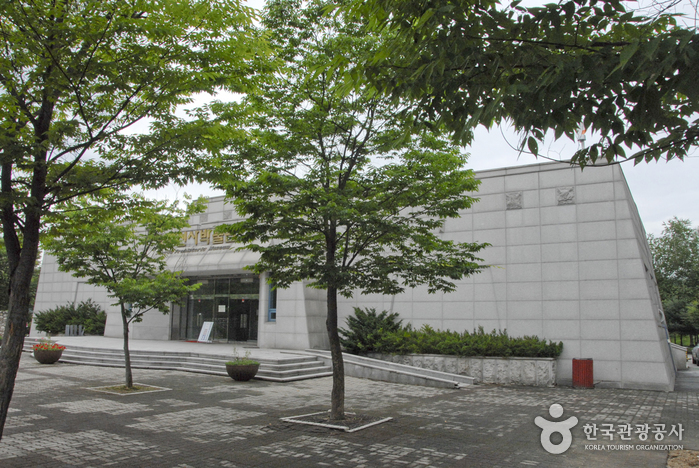
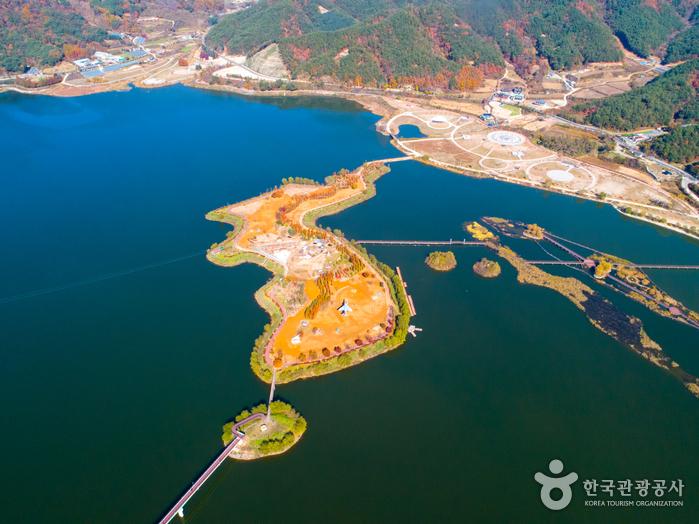
 English
English
 한국어
한국어 日本語
日本語 中文(简体)
中文(简体) Deutsch
Deutsch Français
Français Español
Español Русский
Русский